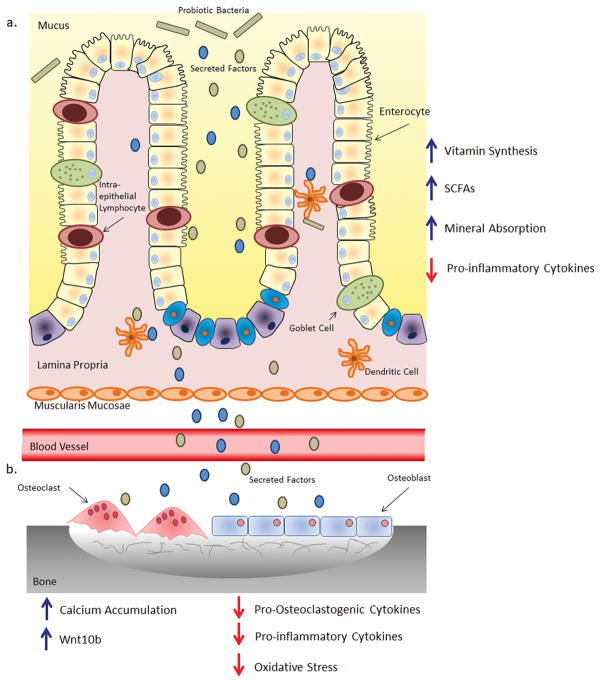Fig 5.
Potential Mechanism by which Probiotic Bacteria Benefit Bone
a) Probiotic bacteria or their secreted factors interact with the intestinal epithelial barrier and cells in the lamina propria. Within the lamina propria the probiotic bacteria/secreted factors interact with antigen presenting cells, such dendritic cells, modulating their immune response. This results in a reduction of inflammatory cytokines leading to an uptake in minerals from the intestinal lumen. b) The bacterial secreted factors then pass into the blood stream and are transported to the bone. Here they can interact with osteoclasts and osteoblasts as well as immune cells. This could then reduce expression of pro-inflammatory and pro-osteoclastogenic cytokines and oxidative stress while enhancing mineral apposition and Wnt10b expression. This modulation results in reduced osteoclast formation subsequently leading to increased levels of bone.

